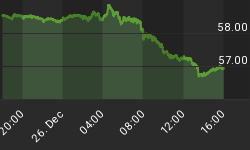Below is an extract from a commentary originally posted at www.speculative-investor.com on 16th February 2006.
In an article at http://www.lewrockwell.com/north/north436.html Dr Gary North argues that gold is presently a better investment than silver. This provoked a response from Franklin Sanders, the author of the excellent financial newsletter "The Moneychanger" (www.the-moneychanger.com) and someone who believes silver will outperform gold by a wide margin over the years ahead. Dr North then attempted a point-by-point rebuttal of Mr Sanders' arguments at http://www.garynorth.com/public/997.cfm.
So, who's right?
Our view is that a good argument can be made for giving a greater weight to gold than silver in an investment portfolio, but Dr North didn't make it. Instead, in his attempted rebuttal of Mr Sanders' case for silver Dr North comes back, time and time again, to silver's under-performance during the precious metals secular bear market of 1980-2001 as if relatively poor performance in the past implies the likelihood of relatively poor performance in the future.
For years we've been reading that investors should steer clear of gold because the yellow metal was such a lousy investment over the two decades beginning in 1980, but this lousy performance is actually one of the main reasons to LIKE gold for the current -- and probably the next -- decade. Gold's terrible performance between 1980 and 2001 led to it becoming extremely under-valued relative to almost every other investment. As a result, all that was needed to set a major bull market in motion was a shift in the confidence trend. Once the trend towards increased confidence in central banking reversed course between 1999 and 2001 it became inevitable that gold would, over many years, go from being relatively under-valued to being relatively over-valued.
The major trends in the US stock market, bonds, gold and commodities that characterised the 1980-2000 period have all reversed direction over the past five years. Therefore, wouldn't the fact that silver under-performed gold while the prior secular trends were in force suggest that silver was now likely to outperform gold over an extended period?
Silver may well outperform gold over the next several years, but, as noted above, we think a good argument can be made for favouring gold-related investments over silver-related investments. Our reasoning revolves around silver's tendency to trend higher relative to gold when confidence and financial market liquidity are rising and to trend lower relative to gold at other times.
After taking a beating between the final quarter of 2000 and the first quarter of 2003, confidence in the financial system has since been recovering and this has led to a rebound in the silver price relative to the gold price. However, we think this recovery in confidence has been a counter-trend phenomenon that will be followed by another prolonged slide. Also, it is worth noting that the silver/gold ratio didn't bottom in line with the major financial market turning point of 1999-2001. Rather, it bottomed during the first quarter of 1991, trended HIGHER during the 1990s, and appears to have reversed LOWER during the 1999-2001 turning-point window. In fact and as illustrated by the following chart comparison of the silver/gold ratio and the S&P500/gold ratio, if we put aside the Buffett-related spike of 1997-1998 we find that the silver/gold ratio reached a major peak in 1999 on almost the same day that the S&P500/gold ratio reached its all-time high.

A few years from now the silver price will probably be well above today's level relative to the gold price because the silver market is much smaller than the gold market and should therefore respond more forcefully to the increase we expect to witness in the investment/speculative demand for precious metals. For this reason we think it is appropriate to have significant exposure to silver-related investments. However, the above chart highlights a RISK of being long silver relative to gold that most silver bulls are either not contemplating at all or are too quick to dismiss. It is this risk -- the potential for plunging confidence and contracting financial market liquidity to cause a substantial rise in the gold price relative to the silver price -- that results in our long-term preference for gold over silver.
Putting it another way, we think silver has greater long-term upside POTENTIAL than gold but when we weigh the downside RISK against the upside potential we come to the conclusion that gold is the better investment.
















